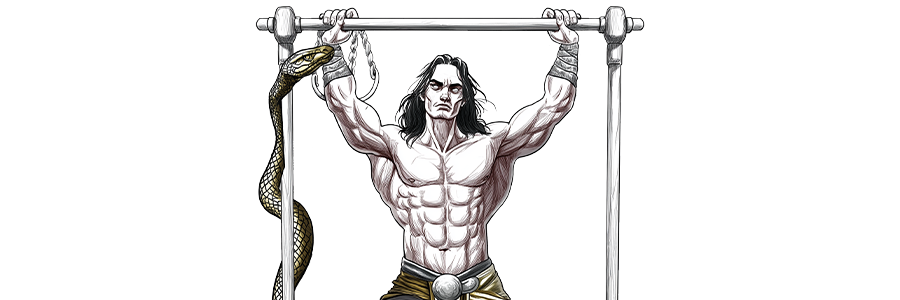

Few figures in Norse mythology are as complex and divisive as Loki. Neither wholly god nor wholly giant, Loki embodies chaos, mischief, and transformation. He is a shapeshifter, a trickster, and ultimately a betrayer of the gods he once aided.
While Odin represents wisdom and Thor strength, Loki embodies disruption and ambiguity. His presence in the myths challenges stability, testing the resilience of gods and men alike.
🔥 Loki gear coming soon — stay tuned, trickster fans!
Loki is the son of the giant Fárbauti and the goddess Laufey. Despite his giant heritage, he lives among the Aesir and is considered Odin’s blood-brother. This duality — belonging yet alien — defines Loki’s role in Norse myth.
He is a shapeshifter, taking the form of salmon, mare, fly, and more. His liminality allows him to move between worlds, embodying the archetype of the trickster found across cultures (Lindow, 2001).
In many stories, Loki assists the gods with his cunning, though often after causing the problem himself. Examples include:
The Theft of Idunn’s Apples: Loki betrays Idunn to the giant Thjazi but later rescues her when the gods demand her return (Skáldskaparmál).
The Building of Asgard’s Wall: Loki negotiates with a giant builder, then transforms into a mare to distract the builder’s stallion, leading to the birth of Odin’s horse Sleipnir.
Thor’s Hammer Theft: Loki accompanies Thor to retrieve Mjölnir, providing comic relief and clever solutions in Þrymskviða.
⚡ Channel Thor’s Strength — Thor Hoodie
👕 Thor Long Sleeve Available Here
These tales show Loki as both indispensable and disruptive, a figure whose chaos paradoxically upholds cosmic order.
While Loki’s early role is ambiguous, his later deeds mark him as a dangerous enemy:
The Death of Baldr: Loki engineers the death of Baldr, the beloved god, by tricking Hodr into throwing the fatal mistletoe spear (Gylfaginning). This act seals Loki’s fate as the gods’ adversary.
Punishment: For his role in Baldr’s death, Loki is bound in a cave with the entrails of his son. A serpent drips venom onto his face, causing him to writhe in agony — a punishment echoing Prometheus in Greek myth.
🌟 Baldr collection in development — purity meets power!
Loki’s final role is catastrophic. During Ragnarök, he breaks free of his bonds and leads the giants and monsters against the gods. He captains the ship Naglfar, made from the nails of the dead, and duels Heimdall. The two slay each other, symbolizing the ultimate collapse of order into chaos (Völuspá stanza 51).
🦅 Embody Odin’s Wisdom — Odin Hoodie
👕 Odin T-shirt coming soon — full set upgrade awaits!
Loki is father to some of the most fearsome beings in Norse myth:
Fenrir, the great wolf destined to devour Odin.
Jörmungandr, the Midgard serpent, Thor’s nemesis.
Hel, ruler of the underworld.
Sleipnir, Odin’s eight-legged horse, born from Loki’s transformation into a mare.
These offspring underscore his role as a liminal, creative, yet dangerous force.
The Poetic Edda and Prose Edda portray Loki inconsistently — sometimes as comic relief, sometimes as malevolent. Scholars debate whether Loki was a later addition to the myths, influenced by Christian ideas of the devil (Simek, 2007; Davidson, 1964).
Regardless, he functions as a mythological catalyst, forcing the gods into action and shaping the narrative of Norse cosmology.
✨ Honor Freya’s Power — Freya Hoodie
🌸 Freya Tee Available Here
Loki reflects the Norse recognition of chaos within the cosmos. Unlike purely malevolent figures, Loki is essential: his mischief ensures that the gods remain vigilant. He represents both creativity and destruction, a reminder of life’s instability.
Modern scholarship places Loki within the global archetype of the trickster, a boundary-breaker found in many traditions (Hyde, 1998).
In modern times, Loki has become a cultural icon, particularly through literature, comics, and film. Yet the ancient Loki is far darker and more unpredictable than his modern adaptations. He embodies ambiguity, transformation, and danger.
🔥 Loki gear coming soon — embrace chaos with style!
Loki is the embodiment of chaos and transformation in Norse myth. From cunning ally to treacherous enemy, he reveals the fragile balance between order and disorder in the Norse cosmos. His role in Baldr’s death and Ragnarök cements him as both indispensable and destructive.
For the Norse, Loki was a reminder that even within Asgard, instability lurks. For us today, he remains a figure of fascination, embodying the eternal dance between mischief and meaning.
Davidson, H.R. Ellis. Gods and Myths of Northern Europe. Penguin, 1964.
Faulkes, Anthony. Edda. Everyman, 1995.
Hyde, Lewis. Trickster Makes This World. Farrar, Straus and Giroux, 1998.
Larrington, Carolyne (trans.). The Poetic Edda. Oxford University Press, 2014.
Lindow, John. Norse Mythology: A Guide to the Gods, Heroes, Rituals, and Beliefs. Oxford University Press, 2001.
Simek, Rudolf. Dictionary of Northern Mythology. Boydell & Brewer, 2007.
